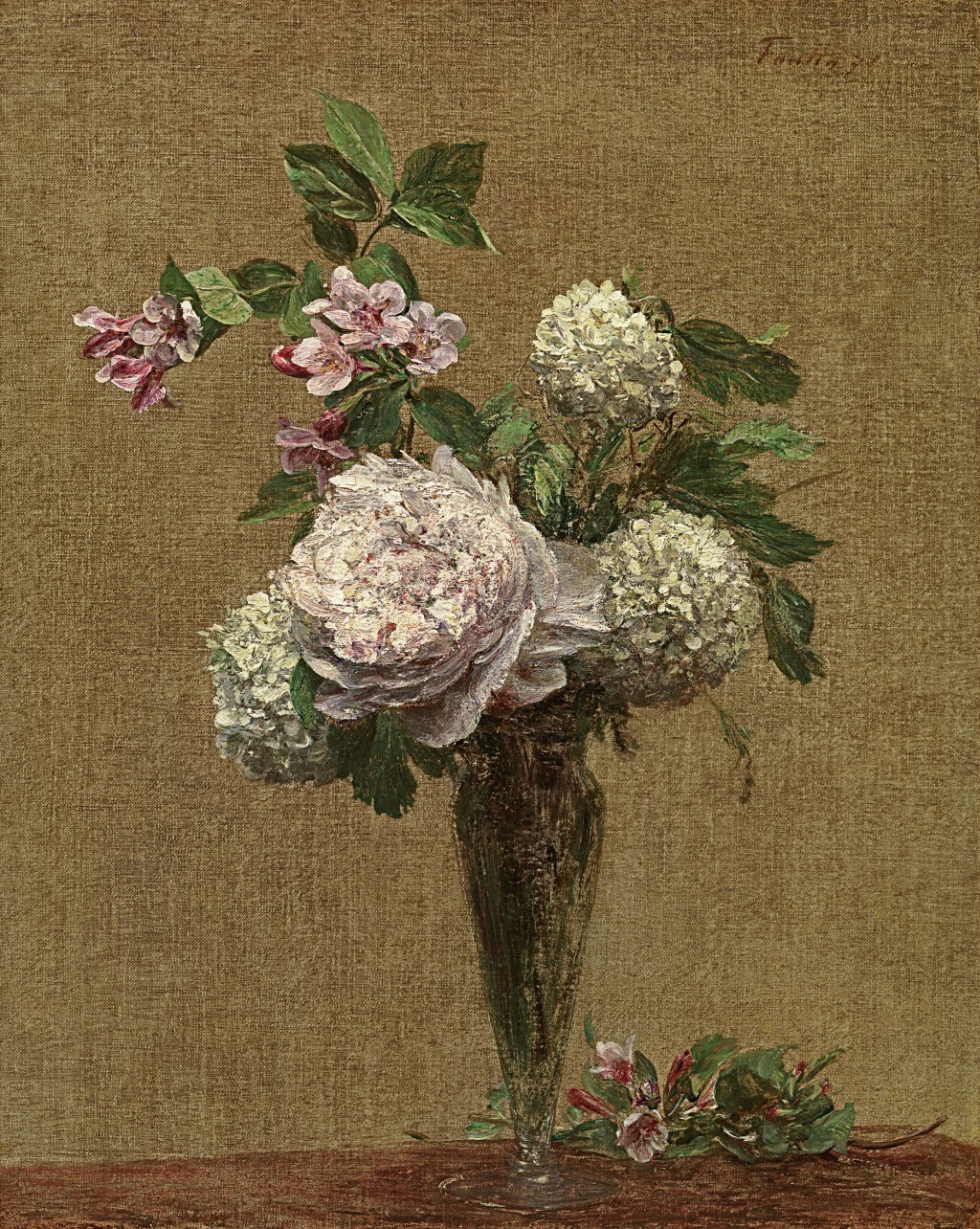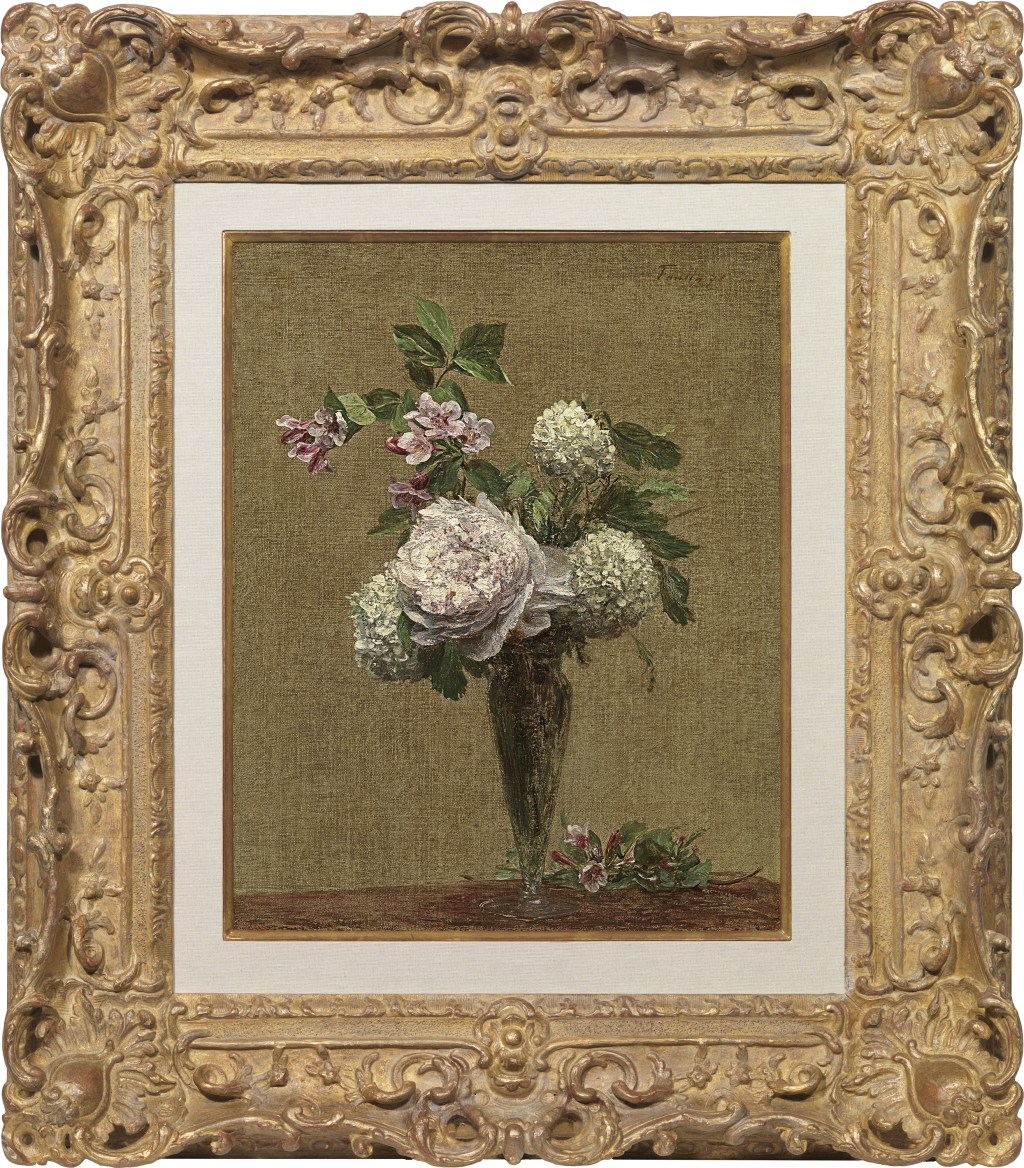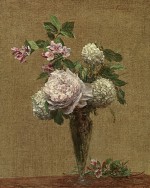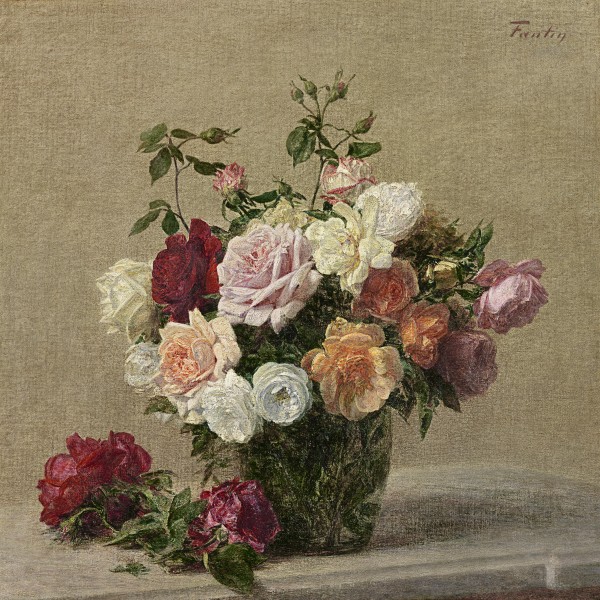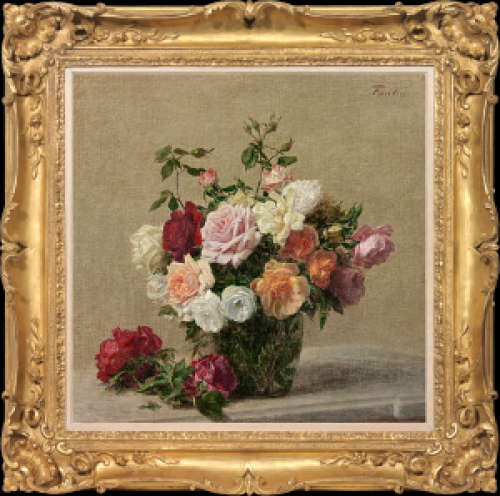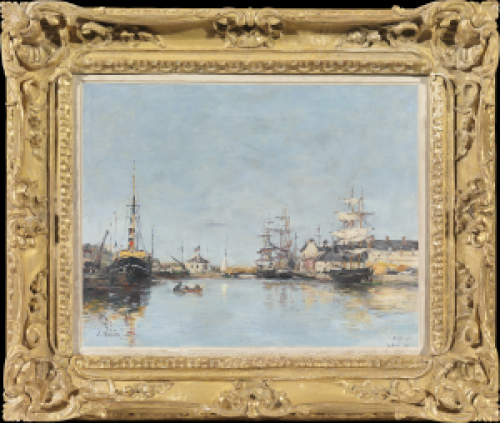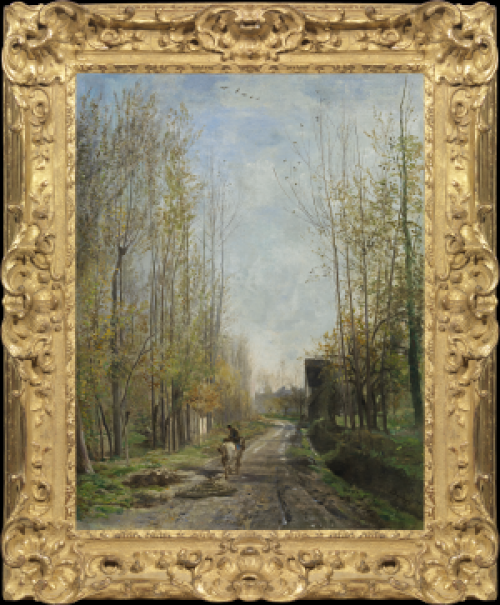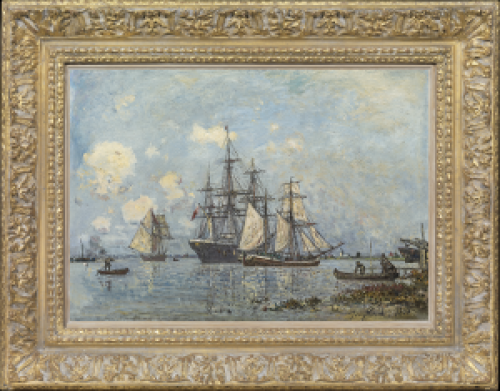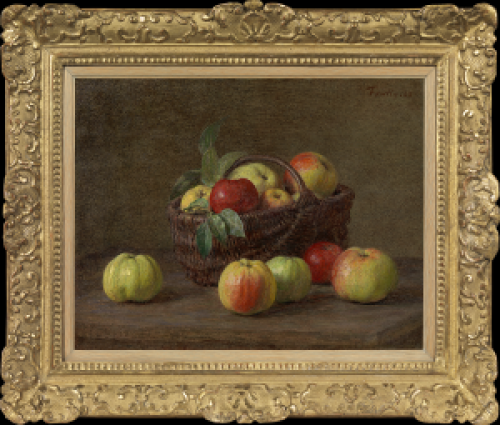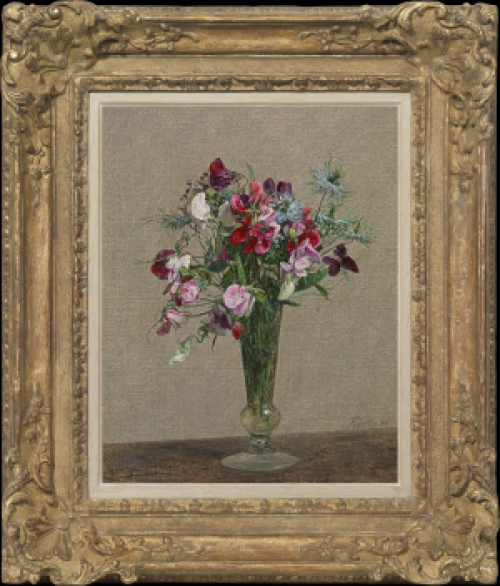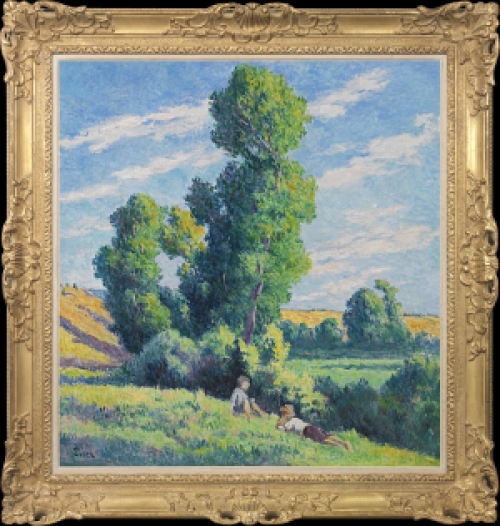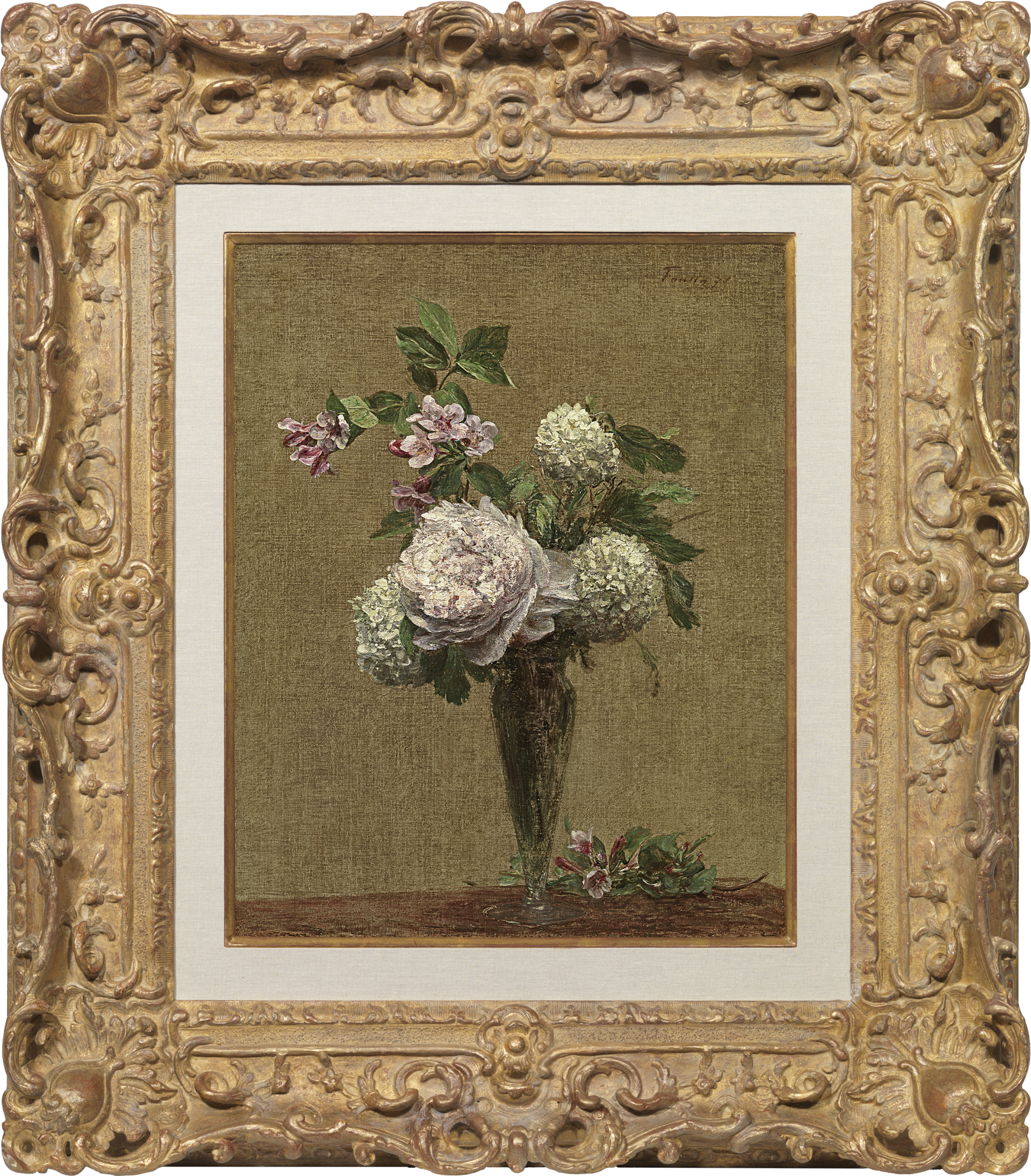HENRI FANTIN-LATOUR
Grenoble 1836 - 1904 Buré
Ref: CB 235
Pivoines et boules de neige
Signed and dated upper right: Fantin . 78
Oil on canvas: 17 3/8 x 13 7/8 in / 44.1 x 35.2 cm
Frame size: 28 ½ x 25 in / 72.4 x 63.5 cm
Provenance:
Alex Reid, Glasgow;
his sale, Hôtel Drouot, Paris, 10th June 1898, lot 28
Mrs Edwin Edwards (c.1833-1907), London
EJ van Wisselingh & Co., Amsterdam
Wildenstein & Co. Inc., New York
Pamela Woolworth Combemarle Collection, New York;
her sale, Christie’s London, 27th November 1964, lot 38;
where acquired by Arthur Tooth & Sons, London
Sotheby’s London, 21st April 1971, lot 6;
where acquired by Frost & Reed Gallery Ltd., London
Michael F Drinkhouse Collection, New York;
his sale, Sotheby’s New York, 17th May 1978, lot 6;
where acquired by Alan and Simone Hartman
Exhibited:
Amsterdam, EJ van Wisselingh & Co., Cent ans de Peinture Française, 16th April-5th May 1928, no.29 (as Fleurs diverses, wrongly dated 1872)
London, Frost & Reed Gallery Ltd. and Christopher Wade, A Collection of Twenty-one Important Paintings, 1973, no.6
Literature:
Mme Fantin-Latour, Catalogue de l’Oeuvre Complet de Fantin-Latour, Paris 1911, p.94,
no.892
M Verrier, Fantin-Latour, Paris 1978, p.35, illus.
To be included in the forthcoming catalogue raisonné of the work of Henri Fantin-Latour currently being prepared by Messrs Brame and Lorenceau
From the mid-1870s, Henri Fantin-Latour abandoned the complex still lifes of his earlier phase, such as the room setting Flowers and various objects, 1874 (Konstmuseum, Göteborg), in favour of simpler flowerpieces set against an even, mid-beige background, as with this work. These restrained, poetic assemblages were popular with his English clients. They were sold through his English agents Edwin (1823-1879) and Ruth Edwards (c.1833-1907). Ruth Edwards carried on dealing in Fantin’s work after being widowed and owned this painting after 1898.
The elegant, fluted vase was a popular choice for Fantin’s smaller bouquets. Here he chooses pastel colours, from the boules de neige (viburnum), to the pale pink peonies, to the raspberry-pink (with deeper pink buds) of the weigela, a shrub imported from China in the 1840s[1]. This perhaps reflected trends in garden design and the fascination with monochromes seen for example in Whistler’s Symphony in white no.1 (The white girl), 1861-62 (National Gallery of Art, Washington DC). Whistler had met Fantin in 1858 and encouraged him to make his first visit to London.
As always, Fantin blends the realism of his academic training with a delight in the tactile qualities of paint. He evokes the tissue-thin delicacy of the peony petals and the massed white flowers of the boules de neige, described with thick, staccato brushwork. The slender vase is composed with quick, allusive strokes. A sprig of weigela on the table top, echoing a favourite device of seventeenth century Dutch flower painters, balances the arch of the weigela on the left of the vase.
HENRI FANTIN-LATOUR
Grenoble 1836 - 1904 Buré
Henri Fantin-Latour was renowned for sensitive flower still lifes, portraits and romantic figure subjects which explored myth, history and opera. He was born in Grenoble in 1836, the son of the portrait painter Jean-Théodore Fantin-Latour and his Russian wife Helène de Naidenoff. He studied with his father from 1846 and with Horace Lecoq de Boisbaudran at the Petite Ecole de Dessin in Paris from 1850 to 1856, copying Old Masters. For some months in 1861 he studied with Gustave Courbet, but eschewed his Realism for a gentler style.
In 1858 Fantin met James McNeill Whistler and was encouraged by him to make several trips to England (1859, 1861, 1864, 1881), learning to etch from Whistler’s brother-in-law Seymour Haden. Fantin sold some of his first flower still lives through his friends Ruth and Edwin Edwards, who popularized them in England. A friendship with Edouard Manet led Fantin to exhibit at the Salon des Refusés in 1863, but he refused to take part in the first Impressionist show in 1874. He exhibited at the Salon from 1861 to 1899.
Like the Impressionists, Fantin was interested in contemporary life and from 1864 exhibited group portraits of the artistic and intellectual circles in which he moved. Edouard Manet and Charles Baudelaire, for example, are depicted in Homage to Delacroix, 1864 (Musée d’Orsay, Paris). The figures are genially interlinked, but occupy their own contemplative psychological space. The supremely elegant single portrait of Edouard Manet, 1867 (Art Institute of Chicago) breathes penetrating intelligence but also retains the subject’s mystery.
Although Fantin’s brushwork was painterly and sensuous in approach, he disliked painting en plein air, instead studying his flowers in the studio, against a plain background. In 1876 he married a fellow artist, Victoria Dubourg (1840-1926). The couple spent summers at Victoria’s family home at Buré in Lower Normandy, drawing inspiration from its abundant garden.
Parallel to Fantin’s poetic but precise observation of flowers are his imaginative figure pieces, painted and lithographed in a soft manner, full of chiaroscuro. He took themes from the Romantic music of Schumann and Berlioz and particularly the monumental, mythic operas of Wagner, in works such as Scène première du Rheingold, 1888 (Kunsthalle, Hamburg), inspired by his 1876 visit to Bayreuth. Fantin-Latour died at Buré in 1904.
The work of Henri Fantin-Latour is represented in the Louvre, Paris; the Musée d’Orsay, Paris; the National Gallery, London; the Royal Collection, London; the Thyssen-Bornemisza Museum, Madrid; the Metropolitan Museum of Art, New York; the Museum of Fine Arts, Boston; Philadelphia Museum of Art and the National Gallery of Art, Washington DC.
[1] We are grateful to Celia Fisher for identification of the flowers: viburnum (Viburnum opulus); white peony (Paeonia lactiflora (synonym P. Albiflora) and weigela (Weigala florida).


